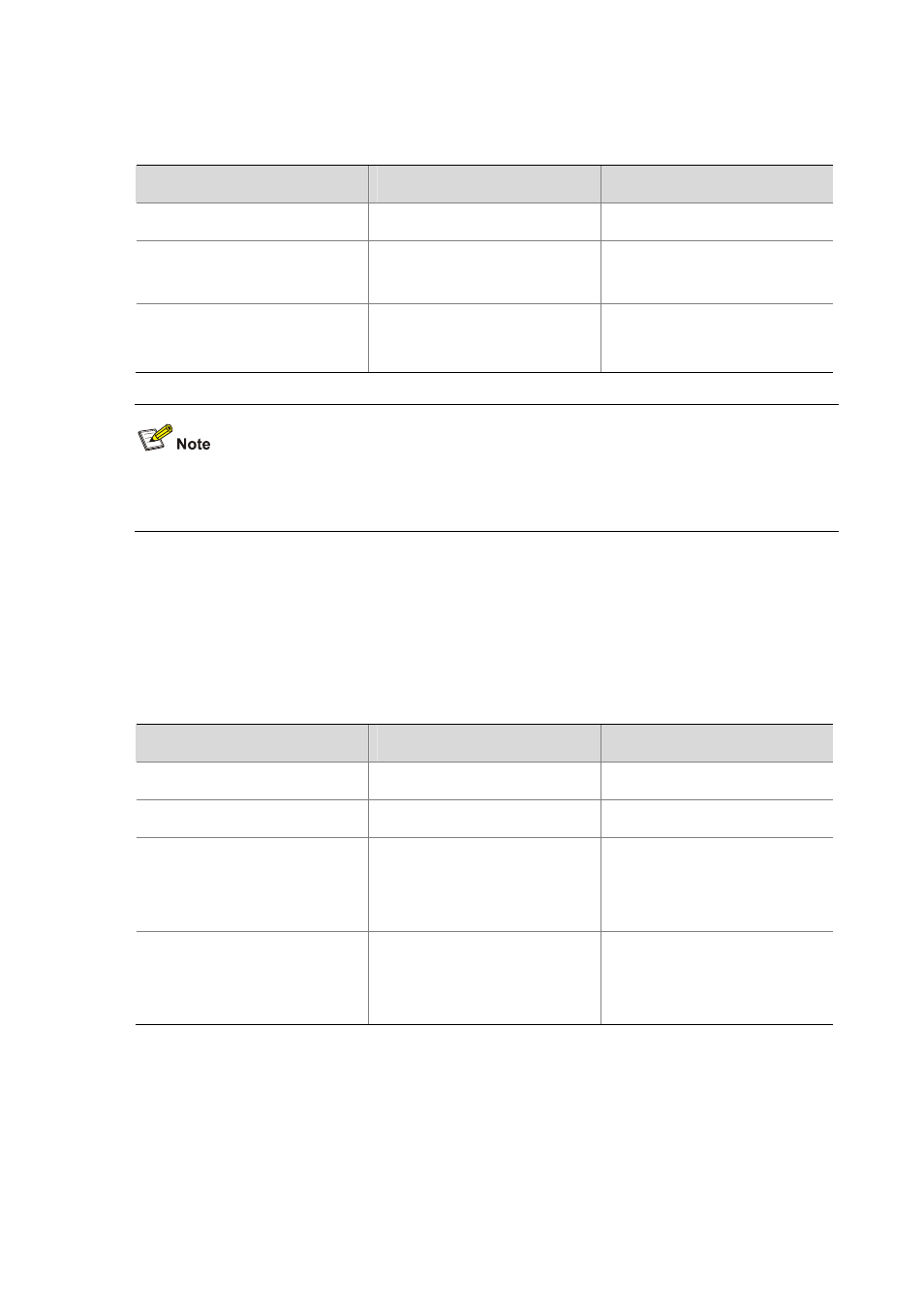Advertising a default route, Configuring a ripng route filtering policy, Configuring a priority for ripng – H3C Technologies H3C S7500E Series Switches User Manual
Page 286

8-6
Advertising a Default Route
Follow these steps to advertise a default route:
To do…
Use the command…
Remarks
Enter system view
system-view
––
Enter interface view
interface interface-type
interface-number
––
Advertise a default route
ripng default-route { only |
originate } [ cost cost ]
Required
Not advertised by default
With this feature enabled, a default route is advertised through the specified interface regardless of
whether the default route is available in the local IPv6 routing table.
Configuring a RIPng Route Filtering Policy
You can reference a configured IPv6 ACL or prefix list to filter received/advertised routing information
as needed. For filtering outbound routes, you can also specify a routing protocol from which to filter
routing information redistributed.
Follow these steps to configure a RIPng route filtering policy:
To do…
Use the command…
Remarks
Enter system view
system-view
––
Enter RIPng view
ripng [ process-id ]
––
Configure a filter policy to filter
incoming routes
filter-policy { acl6-number |
ipv6-prefix ipv6-prefix-name }
import
Required
By default, RIPng does not filter
incoming routing information.
Configure a filter policy to filter
outgoing routes
filter-policy { acl6-number |
ipv6-prefix ipv6-prefix-name }
export [ protocol [ process-id ] ]
Required
By default, RIPng does not filter
outgoing routing information.
Configuring a Priority for RIPng
Any routing protocol has its own protocol priority used for optimal route selection. You can set a priority
for RIPng manually. The smaller the value is, the higher the priority is.
Follow these steps to configure a RIPng priority:
